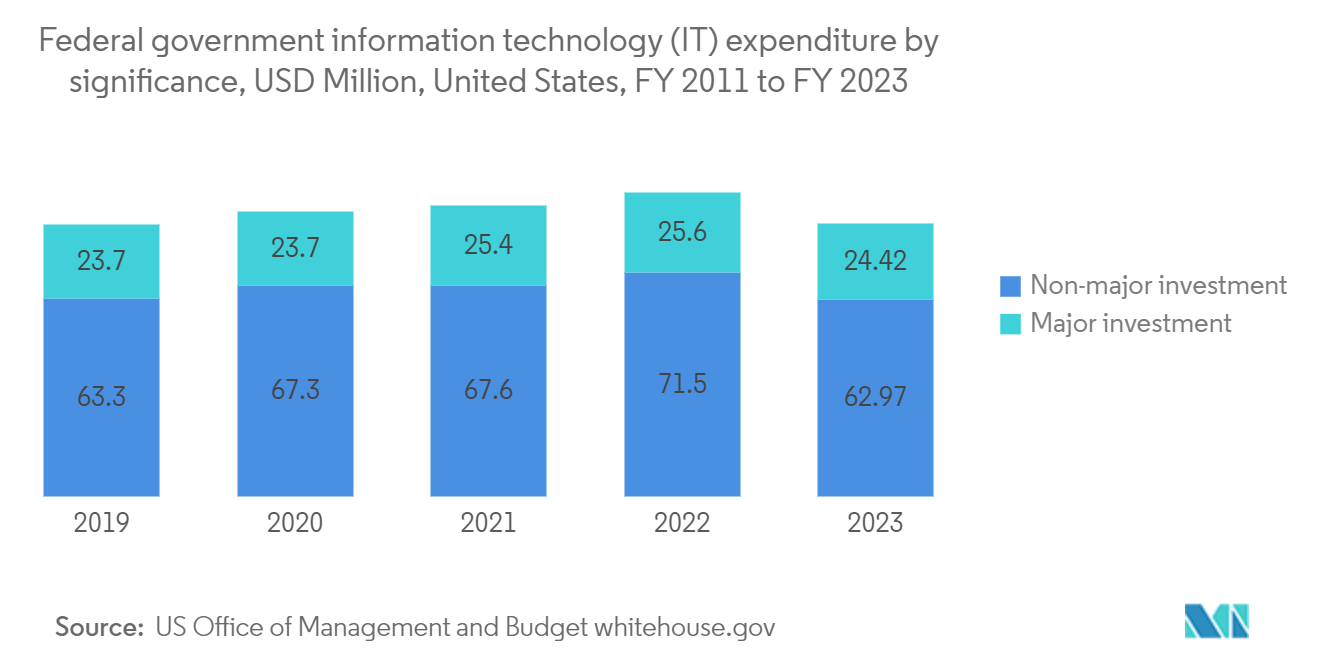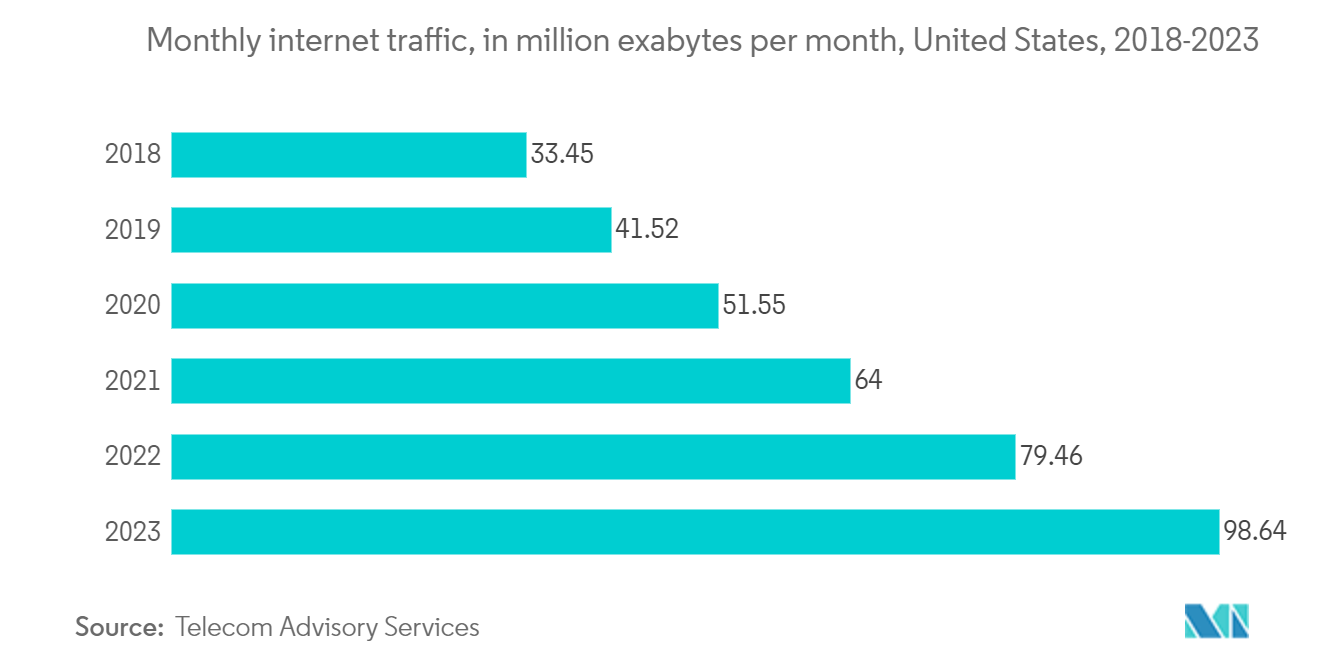Market Trends of United States Data Center Server Industry
IT & Telecommunication Is The Largest Market In The Country
- Of the US corporate infrastructure decision-makers, 94% have at least one cloud deployment, with hybrid or multi-cloud solutions more common. Nearly 74% of US infrastructure decision-makers say their organizations are adopting containers as a platform as a service (PaaS) in on-premises or public cloud environments. Clouds are expected to increase significantly.
- US cloud providers include AWS, Microsoft, and Google. Among enterprise infrastructure decision-makers, 94% use at least one type of cloud deployment, with the majority being hybrid or multi-cloud.
- In the United States, cloud storage is growing due to the growing demand for cost-effective data backup, storage, and backup in every business and the need to manage the data generated by the increasing use of mobile phones.
- With the rise of the digital economy and increased Internet usage in the United States, the need for data storage and processing has increased. The proliferation of hybrid cloud service providers has increased demand for colocation services and increased rack utilization.
- In May 2024, Ampere and Qualcomm, have joined forces to unveil an AI-centric server. This new server harnesses the power of Ampere's CPUs, complemented by Qualcomm's Cloud AI 100 Ultra chips, specifically designed for AI inferencing — focusing on running models rather than training them.

Blade Servers To Grow At A Faster Pace In The Coming Years
- Blade servers are often used for huge processing data, but they also produce a lot of heat. These tend to be more expensive than rack or tower servers and require proper humidity and cooling infrastructure to run efficiently without damaging the hardware.
- Blade servers are installed in server bays, not in racks. This structure allows more servers to be installed in a smaller area. For example, a rack may only hold 10 rack servers, but a blade bay can hold 20 blade servers. The blade chassis can still be rack mounted, but more blade servers can fit in the same space compared to rack servers.
- In August 2023, Mercury Systems, Inc., a United States-based company that delivers computing power for the most demanding aerospace and defense missions, announced Common Module System (CMS) X08, the industry's first robust open standards-based blade server architecture. This is a play-and-play infrastructure model for tactical platforms that operate on sea, land, and air.
- To cater to end-user needs, the top companies are focusing on blade servers in data centers. The growing adoption of technologies such as cloud computing, artificial intelligence (AI), and IT services by businesses is propelling the use of servers in data centers.
- In the coming future, the evolution of healthcare will focus on the reengineering of clinical care and operations around digital health and the pervasive, real-time use of data and advanced analytics to achieve these goals. Such achievements would require a large amount of data to be stored, which would drive the need for data center blade servers over the forecast period.


